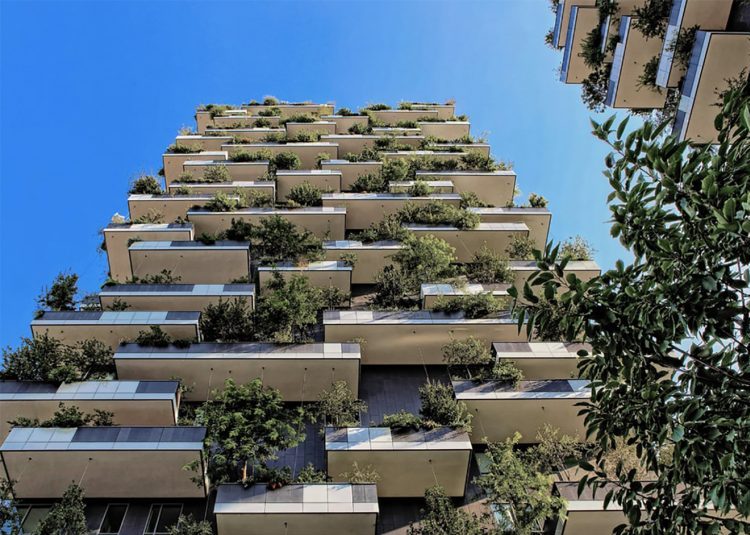The New European Bauhaus (NEB) launched on the 18th of January 2021 and will fund 5 green architecture projects across Europe, to begin with.
Essentially the NEB is a green architecture project and an overhaul of thought in how our buildings relate to the environment. What the Commission is looking for are ideas for new buildings, or renovation of existing buildings, which combine design, sustainability, accessibility, affordability, and investment in order to help deliver the European Green Deal 2050 target. The reason as to why the Commission launched this initiative without a pre-defined blueprint is exactly the point here. The purpose behind the NEB is aimed to encourage genuine creativity and co-creation with sustainable living as the ultimate end result. It’s a blank canvas, and all artists, architects, and designers hold the brush.
If you have any ideas to contribute during this current Co-design phase (further explained below) or if you want to see what others have contributed so far, you can do this through the NEB platform. So, for example, Koichi Takada has designed a carbon positive concept called the sunflower house for the region of Umbria. Falvien Menu developed the Proto-Habitat, a construction (which could be a house, or office!) based on modular design which can be easily set up, transported and recyclable, offering quality, simplicity, and flexibility to match the inhabitants’ needs and lifestyle. Another example is Valentino Gareri’s vision for a sustainable and modular educational building for the post-COVID era: the tree-house school. His vision was inspired by the fact that the pandemic has highlighted the importance of designing buildings with connected outdoor and indoor spaces that strengthen our relationship with nature.
And this is just what we need in Malta. The need for better infrastructure which endorses good and thoughtful design, and complements sustainability, accessibility, and an appreciation for its surroundings, has never been more evident. There is a lot more that we ought to be able to explore when it comes to our relationship with the spaces we live in. The NEB for Malta would be a perfect opportunity to explore what green architecture can do to our way of living. We envisage that our local talent, be it artists, architects, engineers, and other thought-leaders, can utilise the benefits that this movement brings with it, including but not limited to funding opportunities to see projects come to life. Over the years there has been a lot of talk about innovative projects, but they have not seen the light of day – such as the renovation of the old opera house in Valletta, or the St. Anne’s Street pedestrianisation proposal. Now, with the NEB movement, it is the perfect time for these projects to come to fruition.
In the words of our Commission President Ursula von der Leyen:
The New European Bauhaus is about bringing the European Green Deal closer and making tangible the comfort and the attractiveness of sustainable living. The New European Bauhaus will demonstrate that the necessary can also be beautiful.
Co-design, Delivery and Dissemination
The NEB unfolds in three phases: Co-design, Delivery and Dissemination. We are currently in the first phase being the Co-Design Phase which is expected to last until Summer 2021.
This spring in April 2021 the Commission will launch the first edition of the New European Bauhaus prize. The prizes, which include monetary reward and communication support, will be awarded to those ideas that can showcase a project which integrates the key values of the NEB i.e. combining design, sustainability, accessibility, affordability and investment in order to help deliver the European Green Deal. The idea is to spark off discussions that will ultimately lead to the transformation of the cities we live in.
In April with the issuing of the call we will have more insight as to the following:
- The prize categories;
- Who can apply and how;
- The selection process; (public voting and role of the New European Bauhaus Partners, more on the latter below) &
- The precise timetable.
This, however, will not be the only prize awarded. 2022 will bring about a new, more future-oriented prize which will be awarded to emerging ideas and solutions for the NEB.
The NEB is conceived as a multidisciplinary initiative, breaking down silos and bringing different perspectives together to define how we want to live together in the future. This will also be reflected in how the projects come to life, starting from the discussions that are being held on the NEB platform by stakeholders and thought leaders, as well as the funding opportunities which will be made available.
In Summer 2021 we are to expect the first call for proposals for the first pilot project. In order to fund these Bauhauses across Europe the Commission has a vast array of choices. Indeed we have heard that it can dip into the cohesion policy funds, Horizon Europe, including the missions in preparation, the European Innovation Council or the European Institute of Innovation and Technology, the LIFE programme, to name a few.
In fact we expect the NEB will be funded from different sources that the Commission will tap into and utilize over time. How this will be done will depend on what will come out of the design phase. For instance, the Commission can immediately provide technical assistance to ignite the New Bauhaus movement by helping the local stakeholders to develop their new ideas into concrete multidisciplinary collaborations, articulating sustainability, style/aesthetics, and inclusion. Other actions will necessitate longer planning and will need to be aligned with the design phase’s conclusions.
New European Bauhaus Partners
To achieve this sustainable movement, the initiative requires the support of organisations across Europe, who can act as “Partners of the New European Bauhaus”. Partners to the NEB will serve as promoters, community managers, sounding boards, and key conversationalists in the development of the initiative. Here in Malta, for example, Ewropa Consultancy is awaiting confirmation of its application to become a Partner to the NEB.
Who can become a Partner of the New European Bauhaus?
Partners are expected to act as inspiring promoters of the movement, having a large outreach and influence. Partners of the NEB will be instrumental in:
- Supporting the transformation of societies towards living together in more sustainable, inclusive, and enjoyable environments;
- Recognising that people should co-create their living spaces and debate behaviours and lifestyles; and
- Acknowledging that engaging in co-creation processes, whilst respecting the diversity of perspectives and expertise, is necessary to generate inclusive ideas and affordable quality solutions.
European networks and organisations, as well as national and sub-national organisations with significant outreach capacity, statutory purpose, experience, and scope could be ideal Partners.
The core activities of the organisations should be relevant to the NEB initiative, including, for example, activities relating to sustainability, inclusion, design and aesthetics, and citizen engagement. Partners shall be committed to support the initiative in one or more of the following ways:
- Gathering professionals and disciplines in generating ideas that can be openly shared through the NEB website;
- Identifying inspirational projects, practices, or concepts for the initiative; and/or
- Engaging with citizens in discussing and collecting expectations on the qualitative transformation of living spaces and associated lifestyles.
What’s in it for the Partners?
The Partners of the New European Bauhaus initiative will be key members of the community and will be listed on a dedicated page on the website, together with their declaration of interest and commitment to the initiative. The audience of the NEB will also be directed to related activities on the Partners’ websites, and such activities will be listed on the NEB website and other media platforms used for such communication.
Becoming a Partner of the New European Bauhaus means that you will be an instrumental part of the great movement coming our way. Partners of the NEB will be key members of the movement; the Commission will carry out a series of exchanges with you and will facilitate interactions in various forms, also with a view to discuss and test developments of the initiative.
How are Partners selected?
The call for Partners will be permanently open throughout the design and implementation of the initiative. Interested organisations should provide information on their contribution to the initiative, including the nature, timing, and expected output of the proposed activities. Organisations will be selected as Partners based on the scope of their work, as well as on the quality, scale, and diversity of the proposed activities.
High-Level Roundtable
In addition to the Partners, the Commission has also established a High-Level Roundtable made up of 18 advanced thinkers and practitioners in their field bringing inspiration and acting as community ambassadors for the NEB. These individuals have different backgrounds and expertise and have been selected based on their recognized competence, capacity, and commitment in their respective fields. They will act as sounding boards and community ambassadors for the NEB. The Roundtable members will exchange views on key developments across various areas be it creativity, technology, urbanism, social dimensions and also explore solutions. This being said, the high-level roundtable will not be a formal expert group so they will not be expected or obliged to issue reports or participate in defining operational delivery mechanisms for the NEB initiatives.
Are you interested in contributing to this new renovation wave and becoming a Partner of the New European Bauhaus? Get in touch with us now on info@ewropa.mt for guidance on how you can contribute to this movement![NFGA1]
Make sure to keep checking greendeal.mt, as well as our LinkedIn, and Facebook pages for further announcements on this movement and how you can be part of it!






